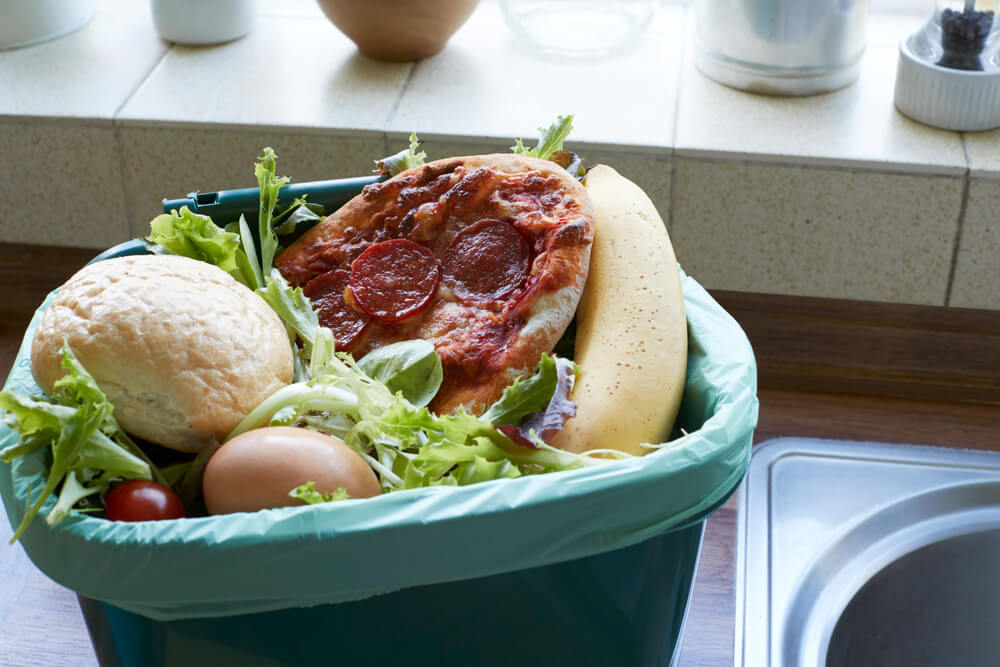How to do a food waste audit at home

You probably know that Kiwi households throw away 157,398 tonnes of food every year – but do you know just how much food you’re throwing away?
Most people have no idea how much food they’re putting in their rubbish bins, because once the bin lid closes, you never see that food again.
Doing a food waste audit is an easy way to find out how much food you’re throwing away – and how much money is going in the bin with it!
What is a food waste audit?
A food waste audit requires you to measure and record all of the food you are throwing away over a period of time.
Why do a food waste audit?
Everyone throws away different foods for different reasons. In order to know how we can reduce our food waste, first we need to know what foods we are regularly throwing away and why.
You will find that some of the food items that you will be throwing away are foods that can’t be eaten – things like banana peels, eggshells and bones.
Food waste can be categorised into two types of waste – avoidable and unavoidable.
- Avoidable: Food that could have been eaten, but wasn’t e.g. leftovers, sandwich crusts, limp lettuce, brown bananas
- Unavoidable: Food that could not have been eaten e.g. bones, eggshells, orange peels
How do you audit your food?
1. Select a container which you can use to place your food waste in. We recommend an empty ice cream container or bowl.
2. Use kitchen scales to weigh the empty container and record the weight on your food waste audit chart.
3. Over the course of the day, place all of the food which you were going to throw into the rubbish into this container. This includes things like banana peels and vegetable peelings, bones, leftovers and things that may have passed their use-by date. Include in here things that you would usually put into your compost, put down an insinkerator or feed to pets or animals. If you have smelly food items in there it is a good idea to keep the container covered in your fridge.
4. At the end of the day, weigh the container with the food in it. Subtract the container weight from the number and record the weight of your food waste on our food waste audit chart. Note: You may fill your container more than once throughout the day – so weigh it once it is full and then empty it, so you can reuse it again that day. Make sure you tally all of the full container weights at the end of the day so that you know how much you have thrown out for that day.
5. Then look through your food waste and record all of the different avoidable foods in your container (anything that could have been eaten).
6. Dispose of the food waste as you usually would.
7. Repeat the following day.
It is best to repeat this process over an entire week to give you a clear picture of what you are wasting so you can identify if there are any patterns or common foods that you are wasting. If you can’t do it for a whole week, it is still useful to do it for a day or two.
Tip: Don’t complete the audits on days where you have ad a party or decided to clean out the fridge as it won’t give you an accurate picture of your usual food waste.
What if I don’t have kitchen scales?
If you don’t have kitchen scales you can still complete a food waste audit.
To do a food audit without scales, use a 2 litre ice cream container and record at the end of each day how full your container is (e.g. half full, three quarters full), or if you filled it multiple times.
I’ve completed my food waste audit. Now what?
Now you can work out how much food you are wasting each year.
1. To do that, work out what you are throwing away on average every day. Tally all of the day’s total weights together and then divide it by the number of days.
2. Once you have your average daily waste, multiply that number by 365 to work out what you are wasting every year.
Now I know how much I waste, how can I reduce it?
Review your food waste audit to see what foods you threw away most often.
Think about each item that is being wasted to see if there is a way that it could have been avoided. Maybe it could have been stored better so that it didn’t go off as fast? Did you cook too much or over buy? Maybe you could have frozen your leftovers?
Do a bit of research to find out ways that you can save your food from the bin.
How do I know if I have succeeded in reducing my food waste?
Give yourself some time to make changes in your kitchen and adopt practices that will help you reduce your food waste.
After a month or so, complete another food waste audit to see if you have managed to reduce what you are throwing away.